The funky new Citroen Cactus marks a serious return to traditional French values of comfort, cost and fun
THE new Citroen C4 Cactus crossover, positioned midway between a conventional five-door hatchback and a compact SUV, may represent the future of the French brand. The Cactus combines imaginative styling with rational thinking in a clever package that is smaller than it looks, light of weight, modestly powered and comfort oriented, yet purely conventional in its mechanicals.
WHAT IS IT? Different, yet also pragmatic. A front drive-only crossover that’s taller than hatchback rivals, but shorter than an SUV, Australian Cacti are expected to get an 81kW 1.2-litre petrol triple turbo manual and a 68kW 1.6-litre four-cylinder turbo-diesel with robotised, clutchless manual (ETG) gearbox. Sadly, the Cactus drivetrains don’t include the brilliant six-speed auto from the newC4 Picasso and Peugeot 308.
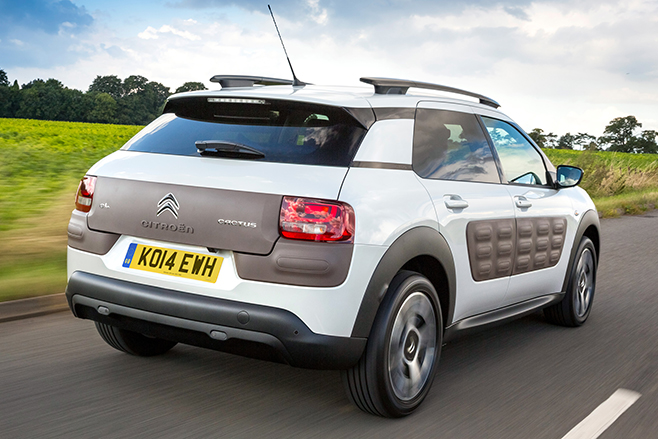
MAIN RIVALS Mazda CX-3, Nissan Juke, Renault Captur, Honda HR-V
THE WHEELS VERDICT Priced right – meaning under $25k – and, if you like the way it looks (we do), the Cactus deserves to be on the shopping list of anyone wanting a cleverly thought-out small car that’s relaxing and distinctive.
Plus: Charming to drive and in appearance, supple ride, Minus: No proper automatic, driving position compromised for the tall
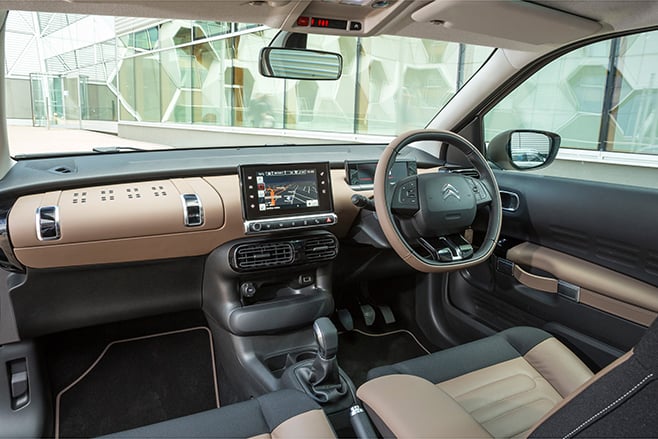
THE WHEELS REVIEW ANY way you look at the Cactus it’s a beautiful piece of real design, combining both practicality and desirability in a truly unique form. It’s a style that instantly distinguishes the Cactus from its more convoluted-looking rivals via a mix of straight lines and pure curves. Like all great Citroen designs, it’s timeless as well as contemporary. We welcome a look that is utterly non-aggressive.
Citroen wants customers to personalise their Cactus and offers a choice of 92 colour/trim combinations with (mostly) vivid exterior colours and a choice of four colours for the ‘Airbump’, so the chances of seeing two the same is highly unlikely. The ‘Airbump’, plastic cladding on the bumpers and doors where it looks like a giant magnet, are there to prevent scratches and dings in the bodywork. Works too, for the oval pads of air are embedded in sheets of a soft yet durable plastic.
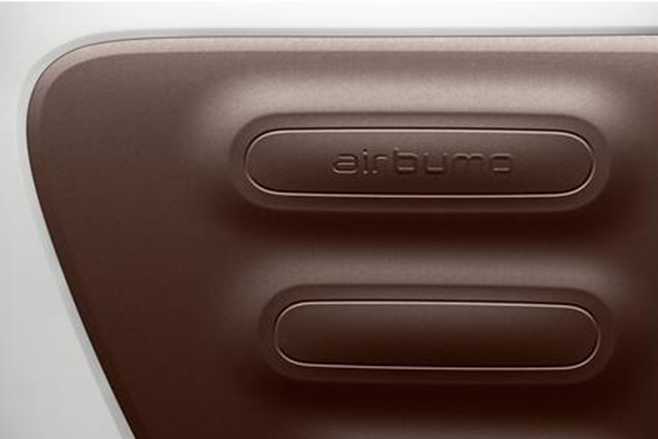
The crossover elements include a slightly raised ground clearance, that protective perimeter, and a not-quite SUV tall-height. There’s no pretension of being an off-roader. The Cactus is built on the same 2595mm wheelbase and platform as the regular C4, and not the new EMP2 platform of the C4 Picasso and Peugeot 308. Despite this, Citroen managed to reduce the weight by around 200kg over the C4 hatchback. The entry level petrol version weighs just 965kg, the diesel test car a commendable 1070kg; you can feel the lightness in the driving.
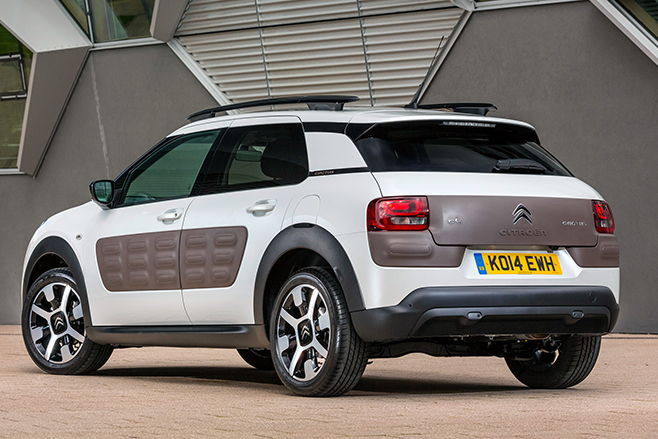
Inside the Cactus is spacious with soft armchair front seats. The interior feels roomy and unpretentious, though tall drivers would like more steering wheel travel and space around the pedals. The dash is confined to a big digital speedo and coloured strip fuel gauge. No tacho, to confirm a product philosophy that blatantly rejects any suggestion of a hard-driving GTI version, 4WD or big-capacity and heavy diesel engine. Therefore Citroen believes, there’s no need for a six-speed gearbox or whopping brakes or heavyweight suspension.
Air conditioning and sound system controls are all on a central touch screen, the passenger airbag is moved to the roof to allow a huge glovebox and the door pulls are luggage-like straps. Other weight saving choices include no split-fold rear seat and pop-out rear windows.
The Cactus is no dynamic marvel, but then it sets out to deliver driving serenity and effortlessly meets real-world requirements without ever feeling earnest or straitlaced. On the relatively large 17-inch alloys fitted to the test car (16s are likely to fitted to the entry model in Australia), the soft suspension soaks up big bumps, noisily absorbs most small irritations and settles happily on the motorway. At least on Portuguese roads. The steering is light enough to make the Citroen easy to manoeuvre and park, requires just 3.0-turns, and weighs up at faster speeds to provide reasonable confidence. Though there’s also plenty of body roll, the Cactus doesn’t pitch to inhibit the driver.
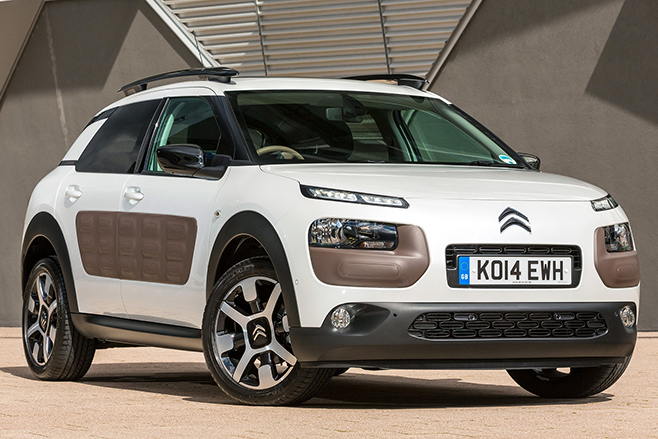
The 73kW turbo-diesel majors on refinement rather than power. Wide gear ratios and a tall top gear make for plenty of gear changing, when the performance is surprisingly strong. It’s no slick MX-5 change and a high clutch take-up requires initial concentration, but the drivetrain’s manners are relaxed, it’s simple to drive and easy to live with, as well as remarkably frugal. How’s 3.2L/100km in the combined cycle?
The Cactus functions in a totally different world to most of its rivals and that’s the car’s inherent charm. It’s a shame there is no proper automatic (to understand why not, remember 84percent of Citroens sold last year in France were manuals) and it needs to be keenly priced to convince customers it’s a worthy rival to the Mazda CX-3 and Honda HR-V. In no way is this a car for young thrusting drivers, its basic ideology is to be comfortable, charming and clever with a distinctiveness of styling that perfectly defines it role. We embrace the philosophy.
SPECS Model: Citroen C4 Cactus BlueHDi 100 Engine: 1598cc, 4cyl, dohc, 16v, turbo Max power: 73kW @ 3750rpm Max torque: 254Nm @ 1750rpm Transmission: 5-speed manual Weight: 1070kg 0-100km/h: 10.7sec Fuel economy: 3.2L/100km (EU) Price: $28,000 (est) On sale: February 2016





